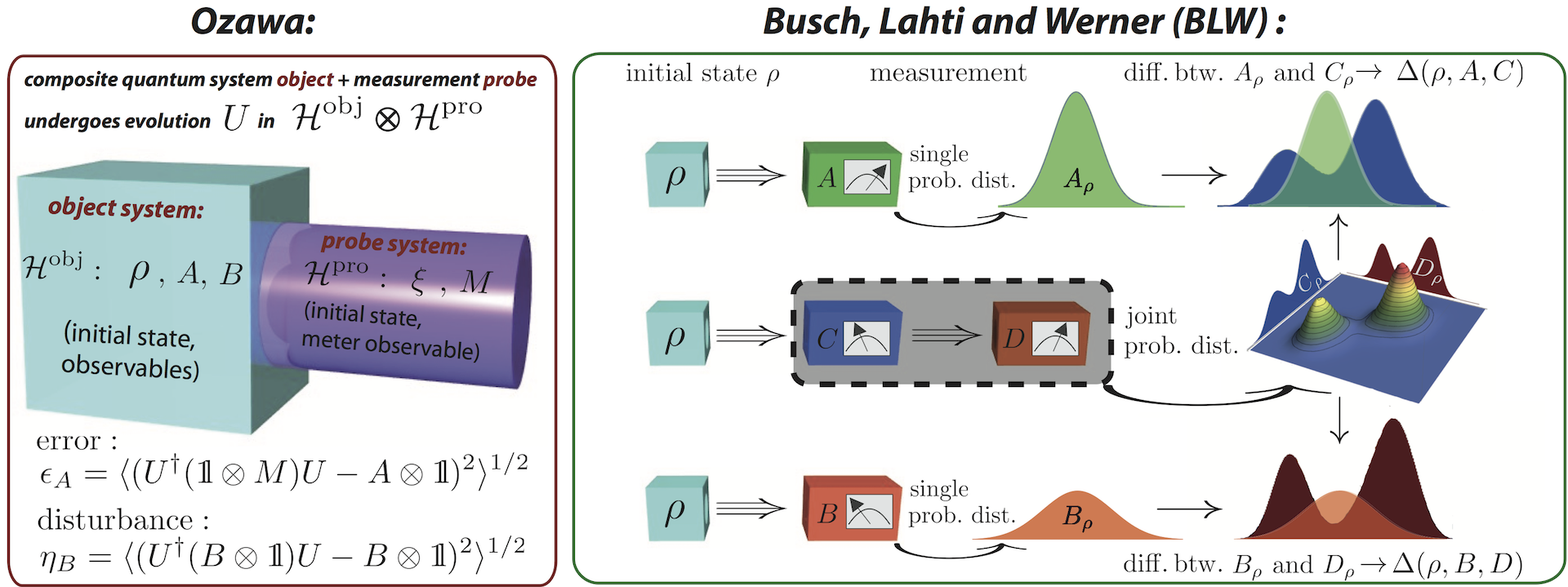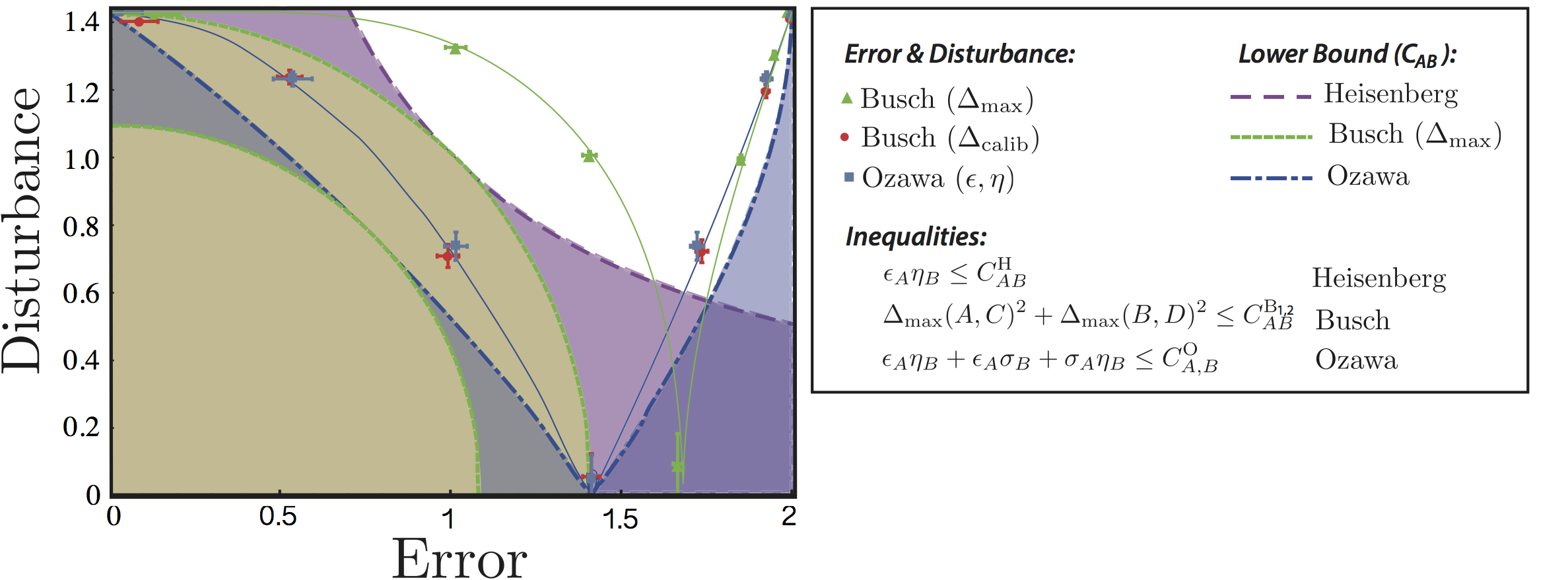
Is Heisenberg’s error-disturbance uncertainty relation violated? Experimental study of competing approaches
September 4, 2017 10:43 amSince our experiment verifying the theoretical findings of Masanao Ozawa, namely a violating and thus a necessary reformulation of Heisenberg‘s original error-disturbance uncertainty relation 1, this particular field has experienced increased attention. However, soon after publication 2, and reproduction of our results in photonics experiments 3, an alternative theory was presented by Paul Busch, and Pekka Lahti, and Reinhard F. Werner (BLW) 4 which in contrast stated the validity of Heisenberg’s relation and thus gave rise to heated debates. We carried out the first experimental comparison of these two competing approaches leading to a surprising result: Despite the strong controversy, in case of projectively measured qubit observables both approaches 5 even lead to equal outcomes 6.

First let us start with a short comparison of the two approaches by M. Ozawa and Busch, Lahti and Werner (BLW): Ozawa’s approach, which is schematically illustrated above on the left hand side, makes use of a so-called indirect measurement model. Here, the measurement process is described by the interaction of a quantum object with a probe or measurement device. The object system’s Hilbert space is denotes as with observables and and initial state . The probe system’s Hilbert space then is with a meter observable and initial probe state . A unitary operator acton on accounts for the evolution of the composite object-probe system from its initially uncorrelated product state to the state after the measurement. Then, the measurement error is defined as root mean square deviation between observable before and meter observable after the measurement interaction . The disturbance induced on an observable by the measurement is given by the root mean square difference between that observable before and after the measurement interaction expressed as .
In BLW’s approach, schematically illustrated above on the right hand side, error and disturbance are evaluated from the difference between output probability distributions. First accurate single measurements (reference or control measurements) of the target observables and in the input state are performed from which the probability distributions and are obtained. In a second step using a successive measurement scheme, the observable is first approximated by another observable denoted as , whose measurement induces a change of the input state and thus modifies the subsequent -measurement to be effectively a measurement of an observable on . Hence, the marginal distributions and of the joint probability distribution obtained from the successive measurement are compared with the output statistics of the single measurements. The difference between and defines the state dependent error and the difference between and is the state dependent disturbance both quantified by the Wasserstein-2-distance as and . Next BLW derive state in-dependent quantities from their state dependent expressions, which is in the qubit case achieved by worst case error/disturbance estimates. A plot of the final results is given below:

To summarize: BLW’s worst-case estimates () behave identically to Ozawa’s quantities () with respect to monotony and extremal points. Using BLW’s calibration method () the results are even exactly the same. See here for experimental details.
1. M. Ozawa, Phys. Rev. A 67, 042105 (2003). ↩
2. J. Erhart, S. Sponar, G. Sulyok, G.Badurek, M. Ozawa, and Y. Hasegawa, Nature Physics 8, 185-189 (2012). ↩
3. L. A. Rozema, A. Darabi, D. H. Mahler, A. Hayat, Y. Soudagar, and A. M. Steinberg, Physical Review Letters 109, 100404 (2012). ↩
4. P. Busch, P. Lahti, and R. F. Werner, Physical Review Letters 116 160405 (2013). ↩
5. P. Busch, P. Lahti, and R. F. Werner, Physical Review A 89 012129 (2014). ↩
6. Stephan Sponar and Georg Sulyok, Physical Review A 96 022137 (2017). ↩